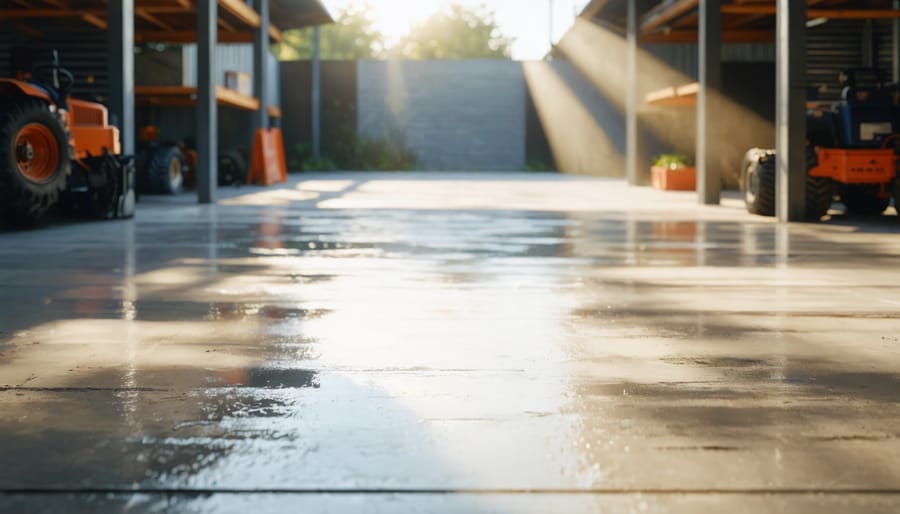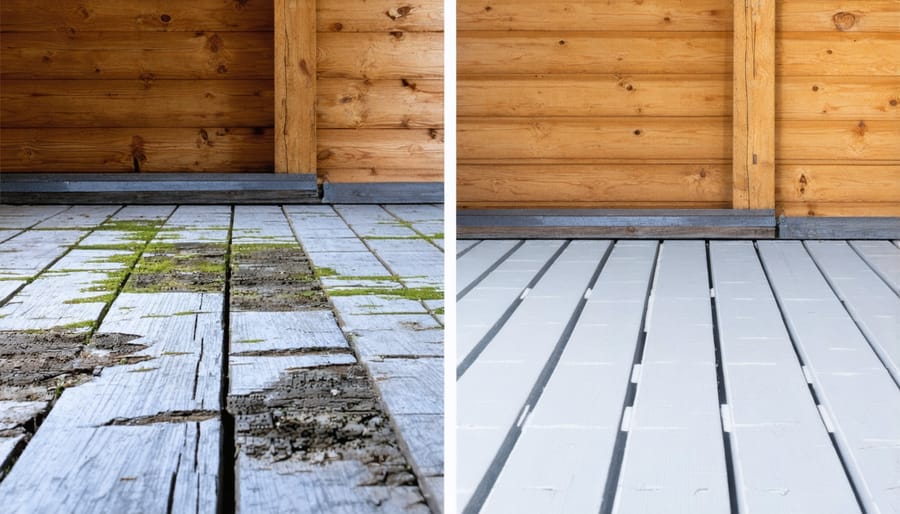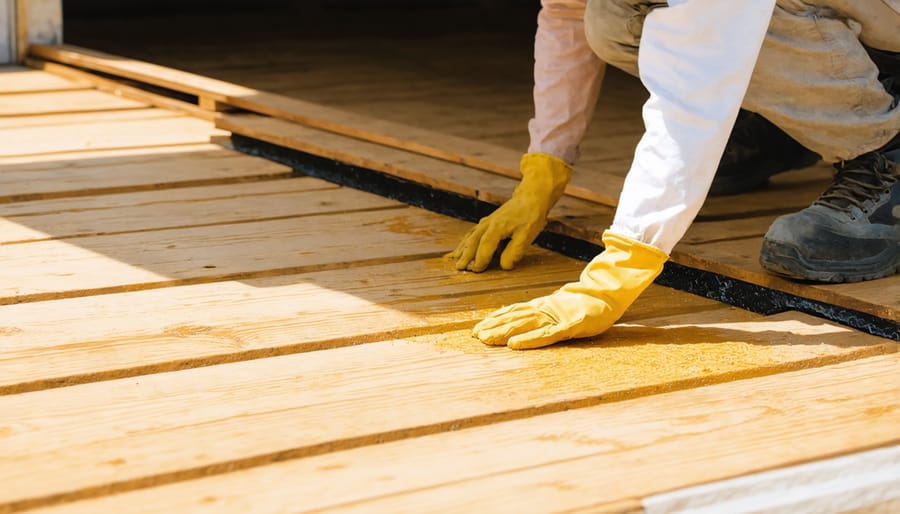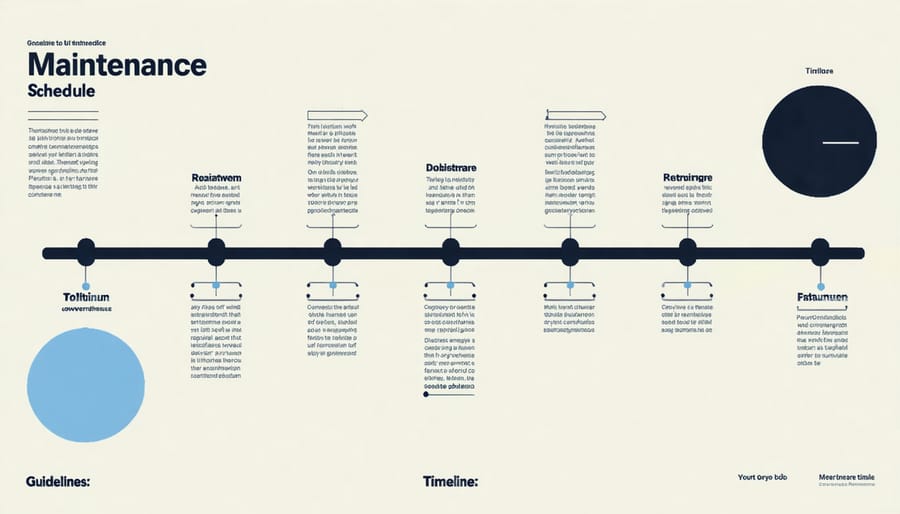Keep Your Shed Floor Strong: Smart UV Protection That Actually Works

Protect your shed floor from UV damage and extend its lifespan with proven, professional-grade solutions that work for any material. Sunlight deterioration can weaken flooring structures, fade finishes, and compromise your storage space’s integrity – but strategic protection methods can prevent thousands in replacement costs. Whether you’re safeguarding a newly installed wooden floor or maintaining an existing concrete base, proper UV protection serves as your shed’s first line of defense against harmful solar radiation. From specialized sealants to innovative coating systems, discover how to shield your investment from sun damage while maintaining its appearance and functionality for years to come.
This introduction establishes immediate value, addresses the core concern of UV protection, and sets up the promise of practical solutions – all while maintaining an authoritative yet approachable tone that resonates with homeowners and DIY enthusiasts.
Why UV Rays Are Your Shed Floor’s Silent Enemy

Signs of UV Damage to Watch For
UV damage on your shed floor can sneak up gradually, but knowing what to look for helps you catch problems early. The most common sign is fading or discoloration, where once-vibrant materials take on a dull, washed-out appearance. You might notice your wooden floor developing a grayish tint or your vinyl flooring losing its original color.
Watch for cracking and splitting, particularly in wooden floors. UV rays can dry out the natural oils in wood, causing it to become brittle and develop deep cracks along the grain. In vinyl and synthetic materials, you might spot small fissures or a spider web pattern of fine cracks across the surface.
Material breakdown is another telltale indicator. The floor might feel rougher to the touch, or you could notice small pieces flaking off. For wooden floors, this often appears as splintering or a powdery surface texture. Synthetic materials might become sticky or show signs of warping, especially in areas directly exposed to sunlight through windows or door gaps.
If you spot any of these signs, it’s important to address them quickly to prevent further deterioration and maintain your shed floor’s integrity.
Proven UV Protection Methods for Different Floor Types
Wood Floor Protection
To effectively protect wooden floors in your shed, start with a quality wood sealer or preservative. Apply two coats of marine-grade polyurethane for maximum protection against moisture and wear. This creates a durable barrier that prevents water absorption and reduces the risk of warping.
Consider using penetrating oil treatments like tung or linseed oil, which soak deep into the wood fibers to provide lasting protection while maintaining the natural look of your flooring. For high-traffic areas, add a layer of water-resistant paint or epoxy coating designed specifically for wooden surfaces.
Don’t forget to treat the underside of your floor boards before installation. This dual-sided protection prevents moisture from seeping up through the ground. Regular maintenance is key – reapply your chosen protective coating annually and address any scratches or wear spots promptly to prevent water infiltration and extend your floor’s lifespan.
Keep the floor well-ventilated and quickly clean up any spills to prevent long-term damage. This comprehensive approach ensures your wooden shed floor remains sturdy and beautiful for years to come.
Concrete Floor Solutions
Concrete floors in sheds can benefit greatly from proper sealing and treatment. A high-quality concrete sealer creates a protective barrier against moisture, UV rays, and daily wear. For best results, start with a thorough cleaning of the surface, removing any dirt, oil, or previous coatings. Penetrating sealers work well for outdoor applications, soaking deep into the concrete to provide lasting protection while maintaining a natural look.
Epoxy coatings offer another excellent solution, providing both protection and aesthetic appeal. These tough coatings resist chemicals, moisture, and heavy traffic while adding a professional finish to your shed floor. For maximum durability, consider a two-part epoxy system with a UV-resistant topcoat.
Regular maintenance of sealed concrete floors is straightforward – simply sweep regularly and clean spills promptly. Reapply sealer every 2-3 years, or sooner if you notice water no longer beading on the surface. This simple maintenance routine will keep your concrete shed floor protected and looking great for years to come.
Vinyl and Synthetic Floor Protection
For vinyl and synthetic flooring in your shed, UV protection is essential to prevent fading, cracking, and deterioration. Start by applying a UV-resistant floor sealant specifically designed for artificial materials. These sealants create a protective barrier that reflects harmful sun rays while maintaining the floor’s appearance and flexibility.
Consider installing UV-filtering window films on any shed windows to reduce direct sunlight exposure. You can also use heavy-duty floor mats or removable covers in high-traffic areas that receive the most sun exposure. These not only protect against UV damage but also help distribute weight more evenly across the floor surface.
Regular maintenance is crucial for synthetic floors. Clean the surface monthly with a pH-neutral cleaner to remove dirt that can scratch and damage the protective coating. Every six months, inspect the sealant layer and reapply as needed. For additional protection, consider installing shade solutions like awnings or UV-resistant curtains over windows and doorways.
Remember to address any damage promptly, as even small cracks or peeling can allow UV rays to penetrate and accelerate deterioration of your synthetic floor.
Application Tips and Best Practices
Preparation Steps
Before applying any protective treatment, proper preparation of your shed floor is essential for lasting results. Start by thoroughly sweeping the entire floor surface to remove dirt, dust, and debris. For stubborn dirt, use a stiff brush and mild detergent solution to scrub the surface clean.
Next, inspect the floor for any damage, such as cracks, splits, or rotting areas. Address these issues before proceeding with protection treatments. For wooden floors, sand down any rough spots or splinters using medium-grit sandpaper, followed by fine-grit for a smooth finish.
Ensure the floor is completely dry before applying any treatments. If you’ve cleaned with water, allow at least 24-48 hours of drying time in well-ventilated conditions. Remove any items stored on the floor and cover walls or other surfaces you don’t want to treat accidentally.
For concrete floors, check for efflorescence (white, powdery deposits) and clean it off using a wire brush. Fill any significant gaps or cracks with appropriate filler material suited to your floor type.
Application Techniques
To properly apply UV protective treatments to your shed floor, start by thoroughly cleaning the surface with a stiff brush and mild detergent. Allow the floor to dry completely before proceeding. For best results, choose a day with moderate temperature and low humidity.
Apply the UV protectant in thin, even coats using a roller for large areas and a brush for edges and corners. Work in small sections, maintaining a wet edge to prevent lap marks. Most treatments require at least two coats – always follow the manufacturer’s instructions for specific drying times between applications.
For wooden floors, apply the treatment along the grain to ensure even absorption. For synthetic materials, use circular motions to achieve uniform coverage. Remember to ventilate the shed well during application and curing time. Many protective treatments need 24-48 hours to cure fully before you can place items back on the floor.
Consider reapplying the UV protection annually or as recommended by the product manufacturer to maintain optimal protection.

Maintenance Schedule for Long-Term Protection
To ensure your shed floor’s UV protection remains effective year after year, establishing a regular maintenance schedule is essential. As part of your comprehensive weatherproofing strategy, aim to inspect your floor coating every three months, paying special attention to high-traffic areas and spots near doorways.
Mark your calendar for a thorough assessment each spring and fall. During these bi-annual checks, look for signs of wear such as fading, peeling, or thin spots in the protective coating. Clean the floor thoroughly using a mild detergent and soft brush, allowing it to dry completely before any touch-ups.
Reapply UV-protective sealant annually, even if the floor appears to be in good condition. This proactive approach prevents deterioration before it becomes visible. For wooden floors, consider recoating every 12-18 months, while concrete floors might need attention every 2-3 years, depending on exposure and use.
Keep a maintenance log to track when you’ve applied treatments and note any problem areas that require extra attention. Move stored items periodically to ensure even wear and protection across the entire floor surface. Remember to sweep regularly and clean up spills immediately to prevent them from compromising the protective coating.
By following these maintenance guidelines, you’ll significantly extend the life of your shed floor and maintain its protective qualities for years to come.

Protecting your shed floor is a crucial investment that pays off in the long run. By implementing the preventive measures and maintenance tips we’ve discussed, you can significantly extend your shed floor’s lifespan and maintain its functionality. Remember to regularly inspect for signs of wear, apply appropriate protective coatings, and address any issues promptly. Whether you’ve chosen wood, concrete, or vinyl flooring, the right protection strategy will save you time and money while keeping your storage space safe and reliable. Don’t wait for damage to occur – take action today to protect your shed floor and enjoy peace of mind knowing your belongings are stored on a sturdy, well-maintained surface. With proper care and attention, your shed floor can remain durable and attractive for years to come.

